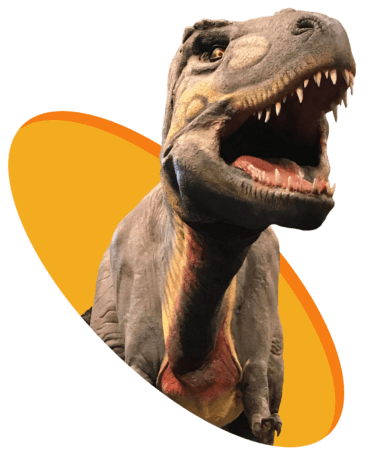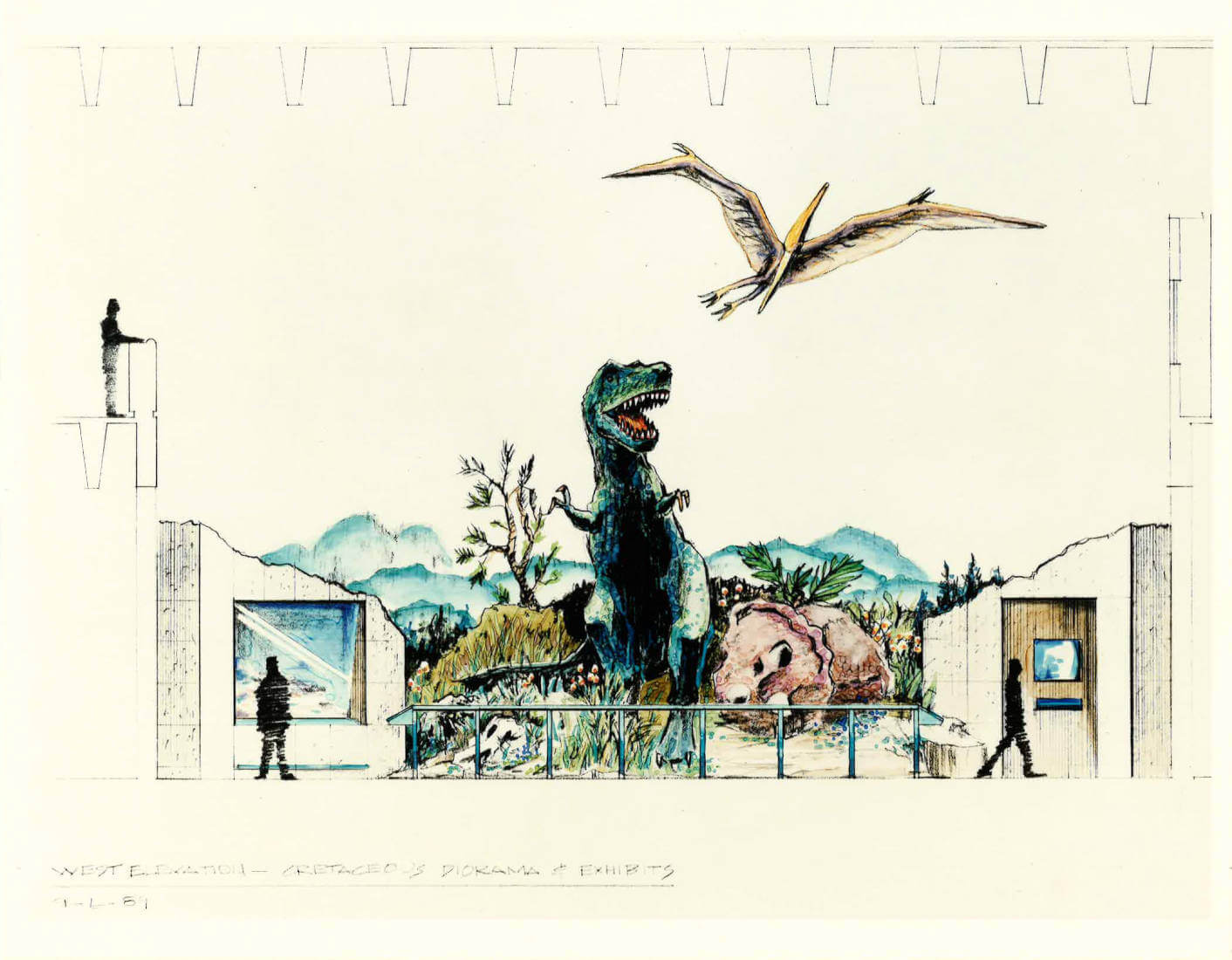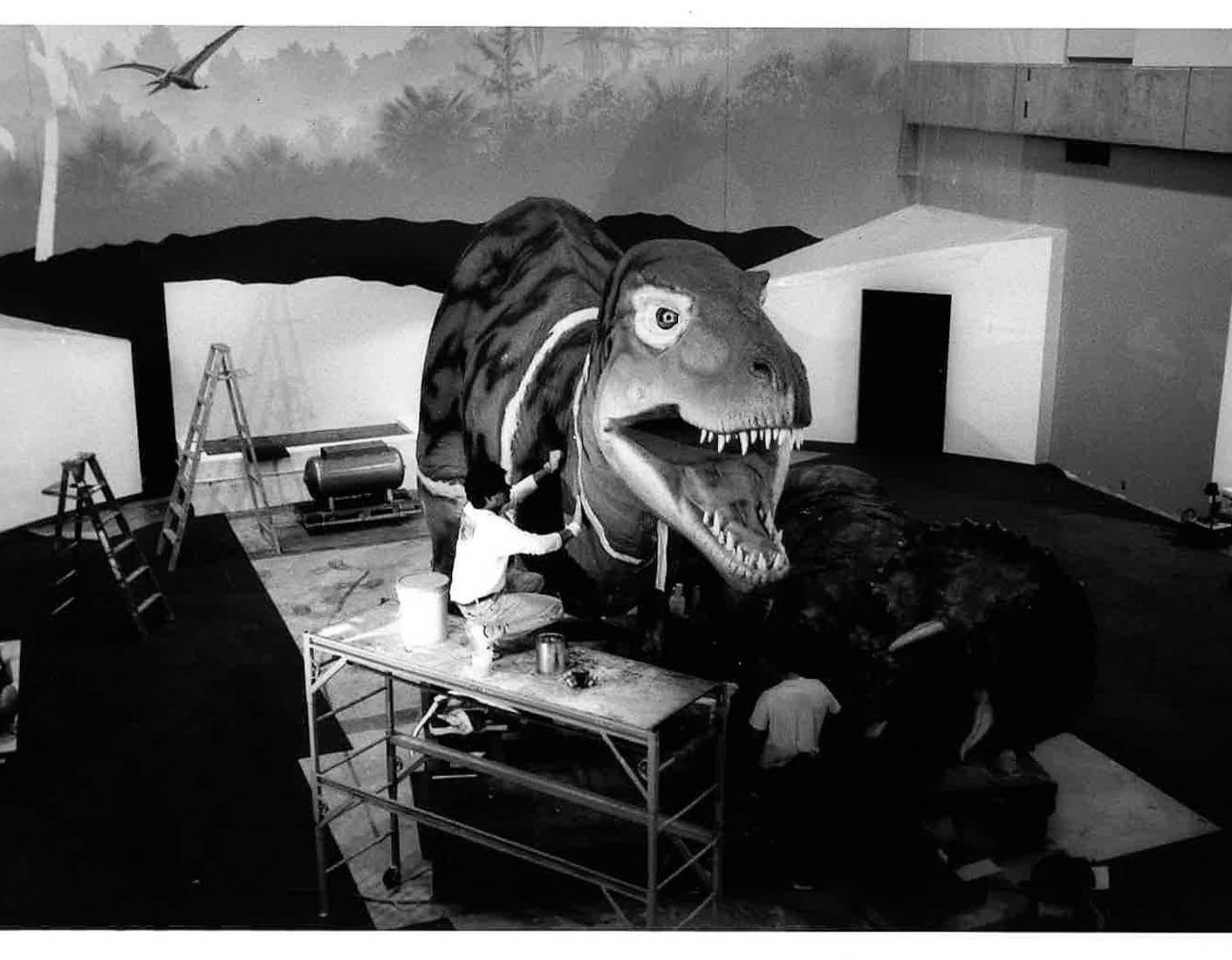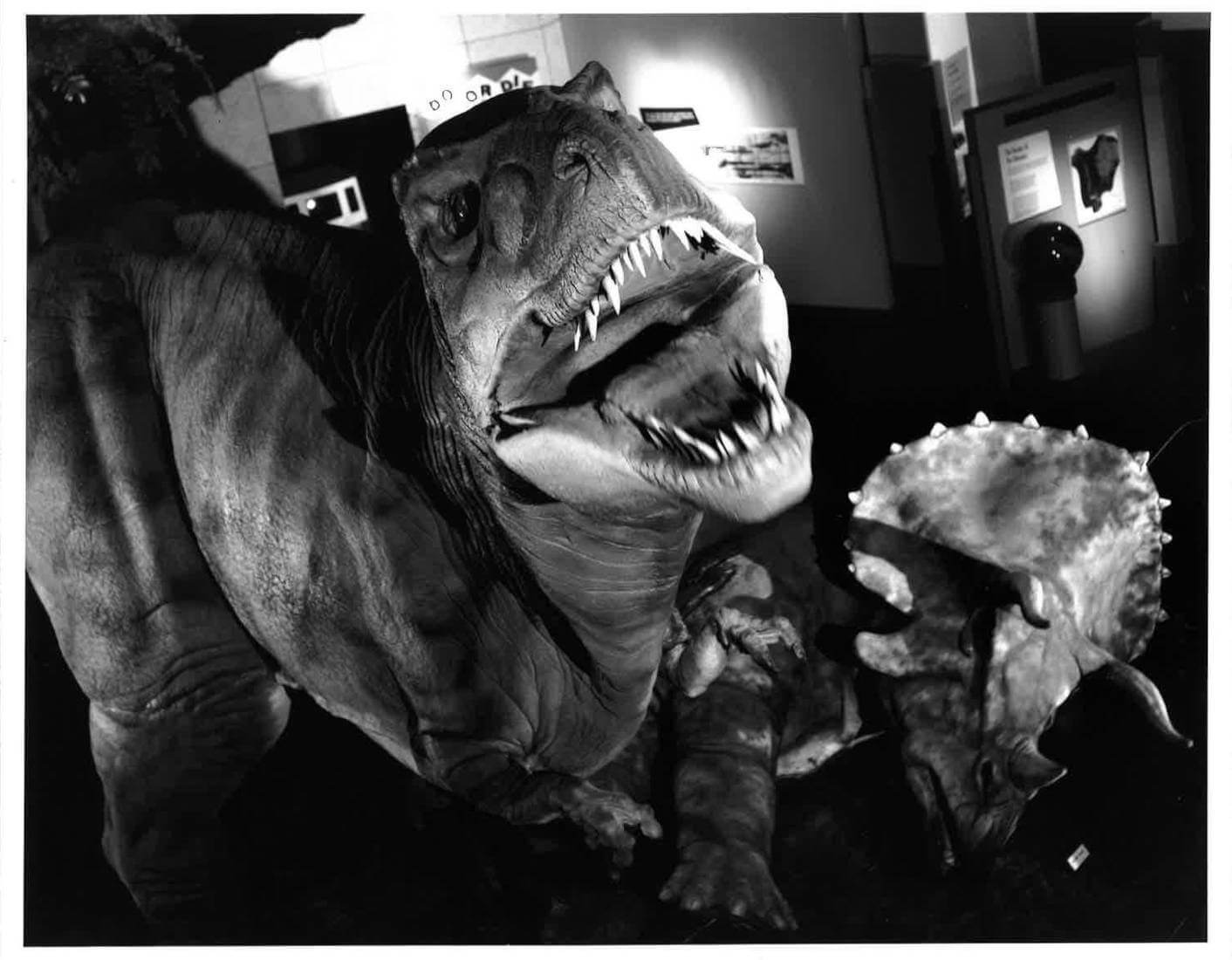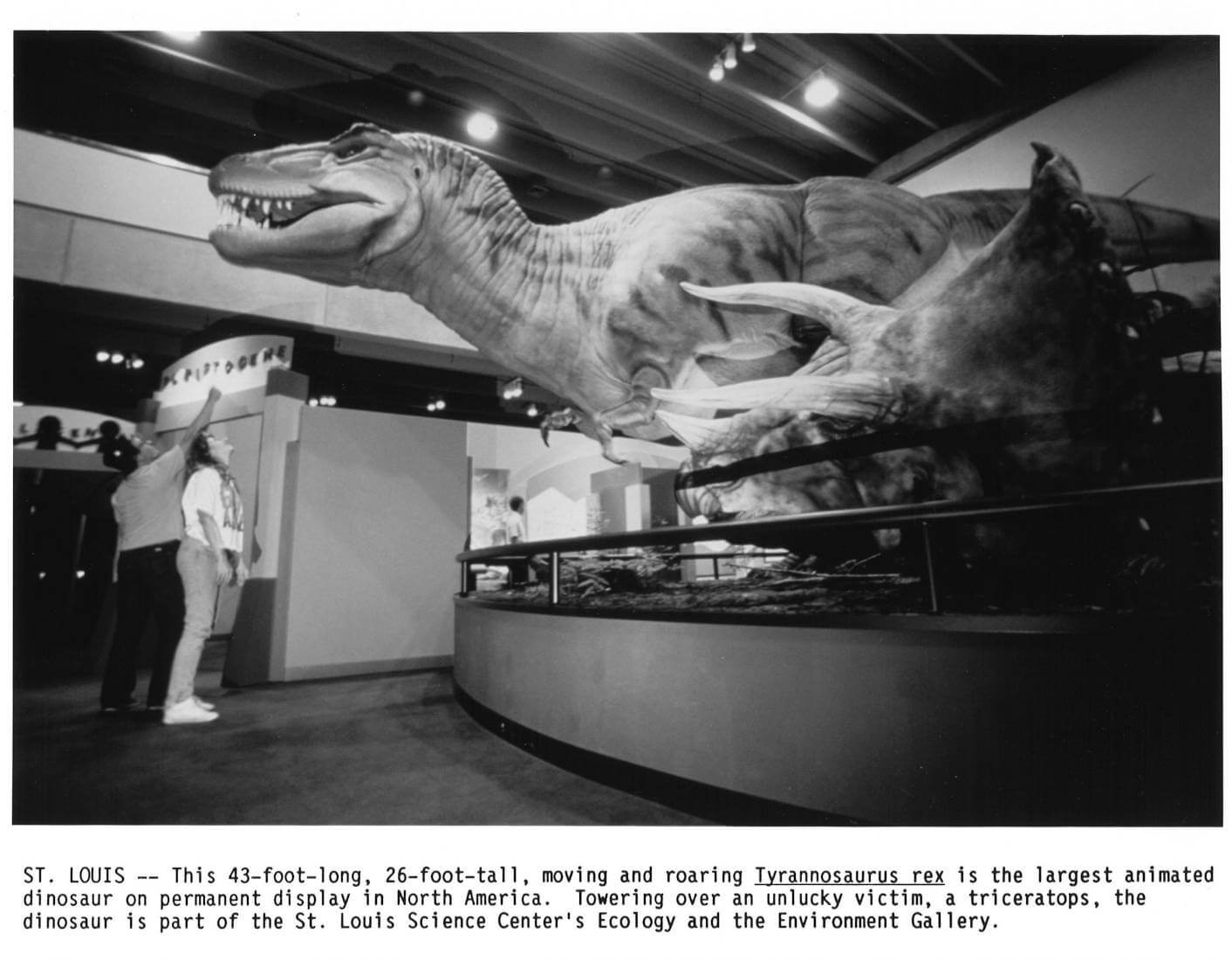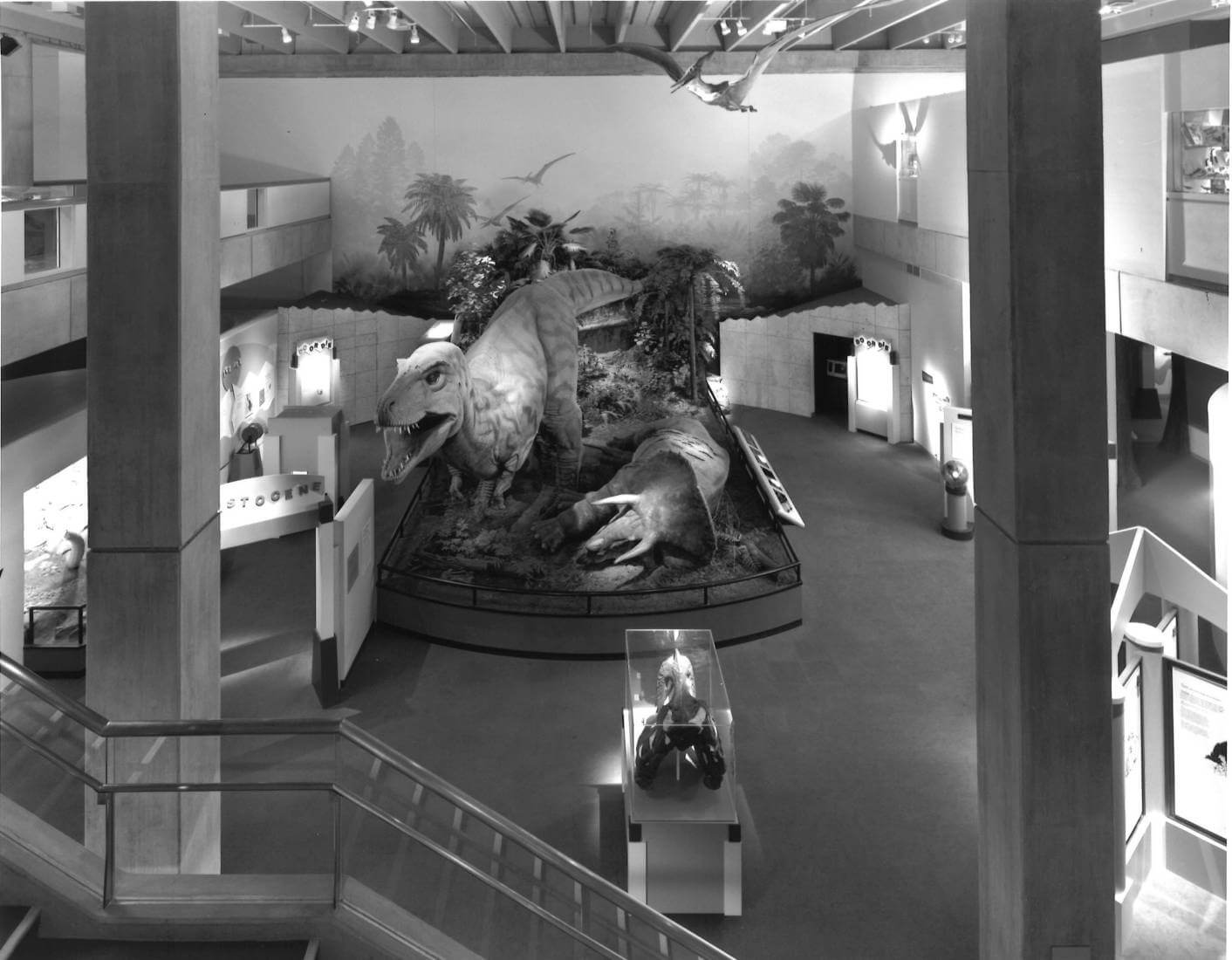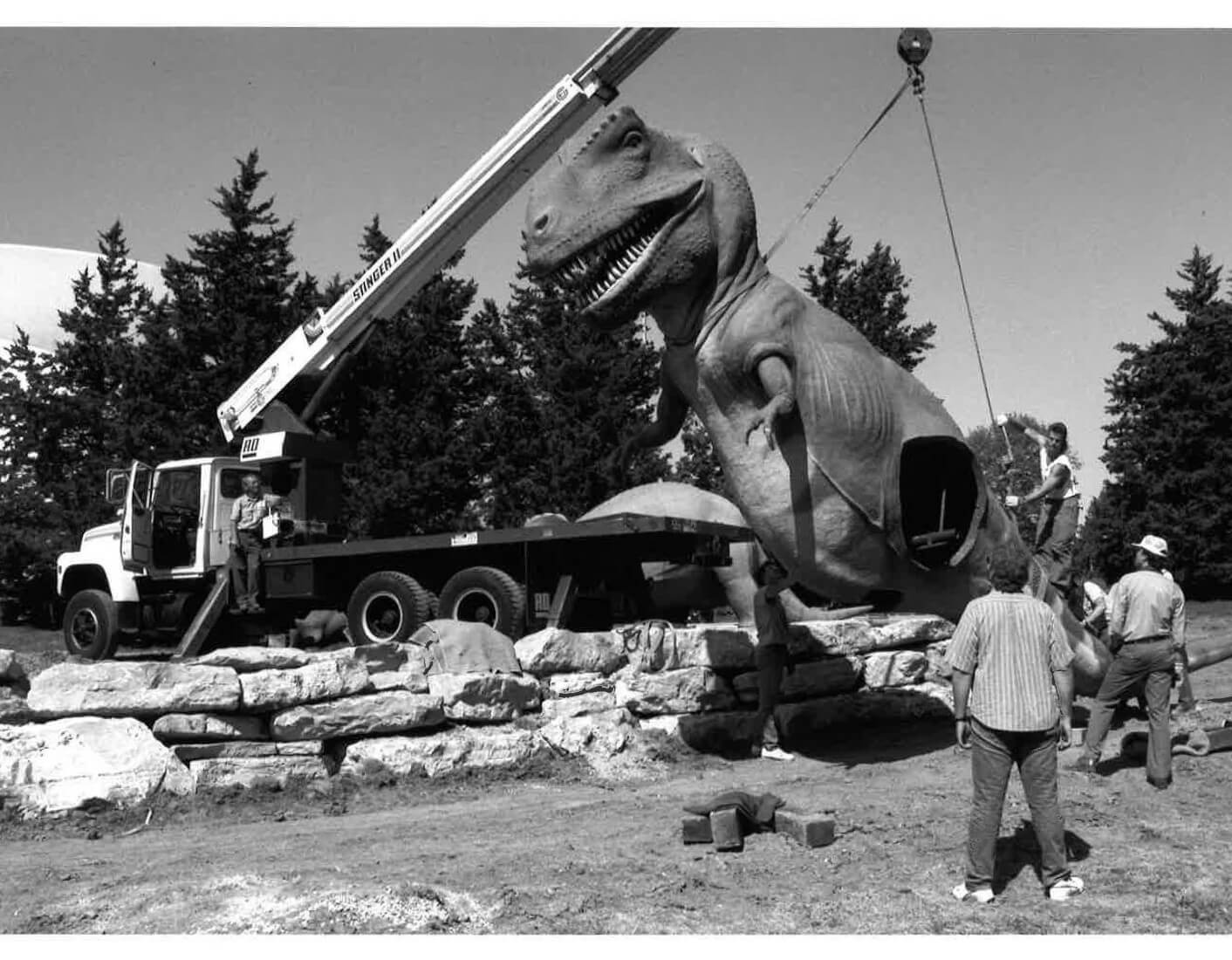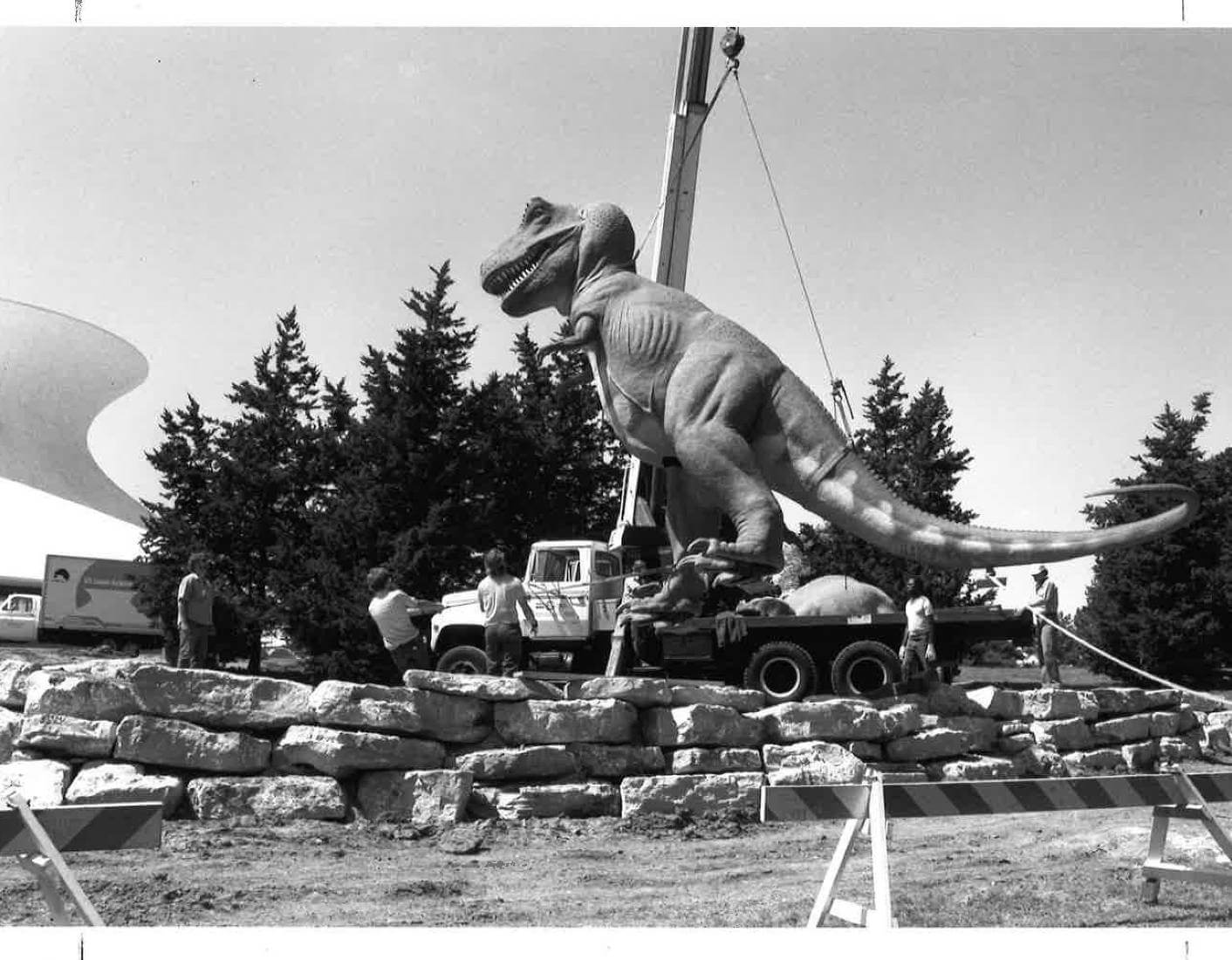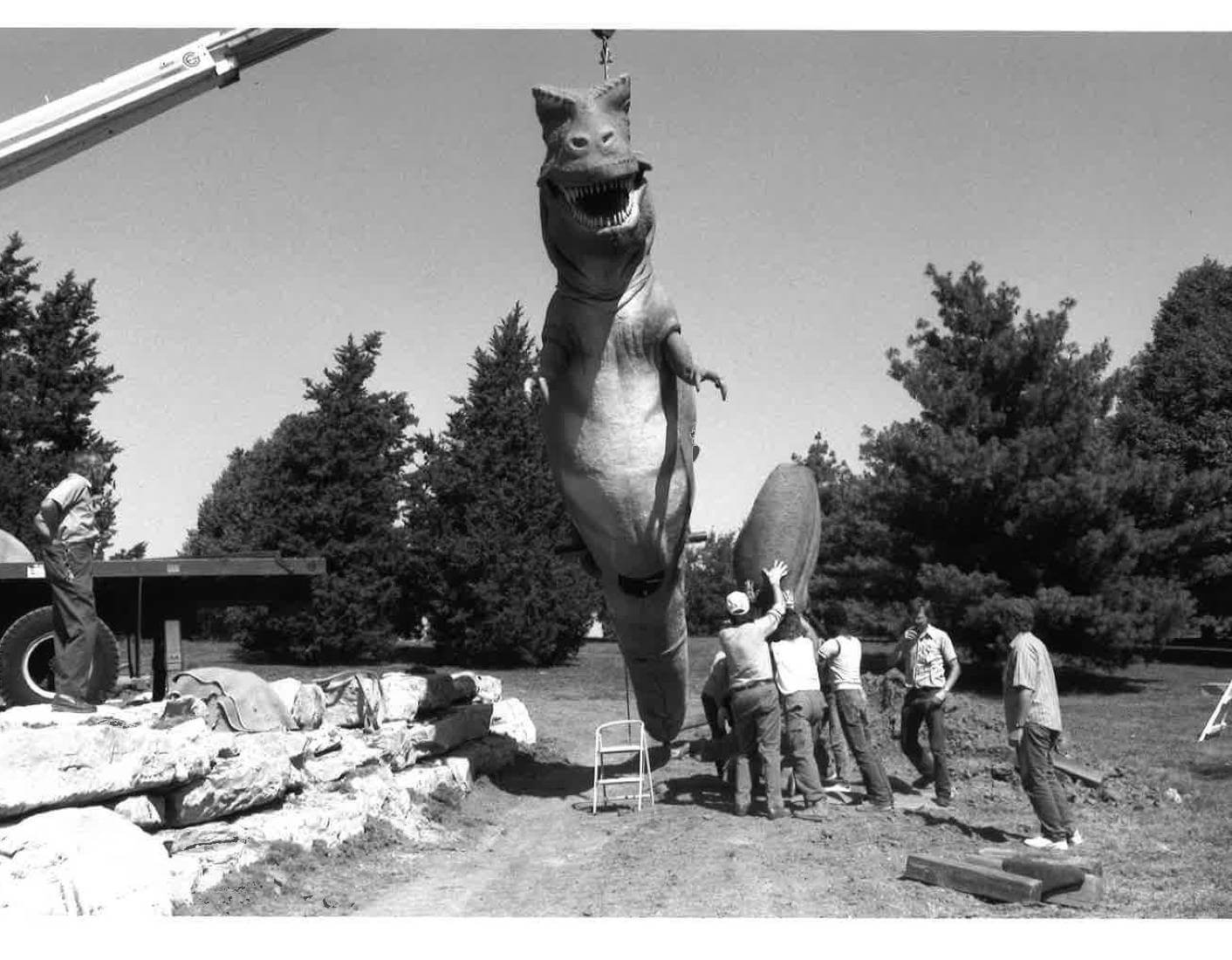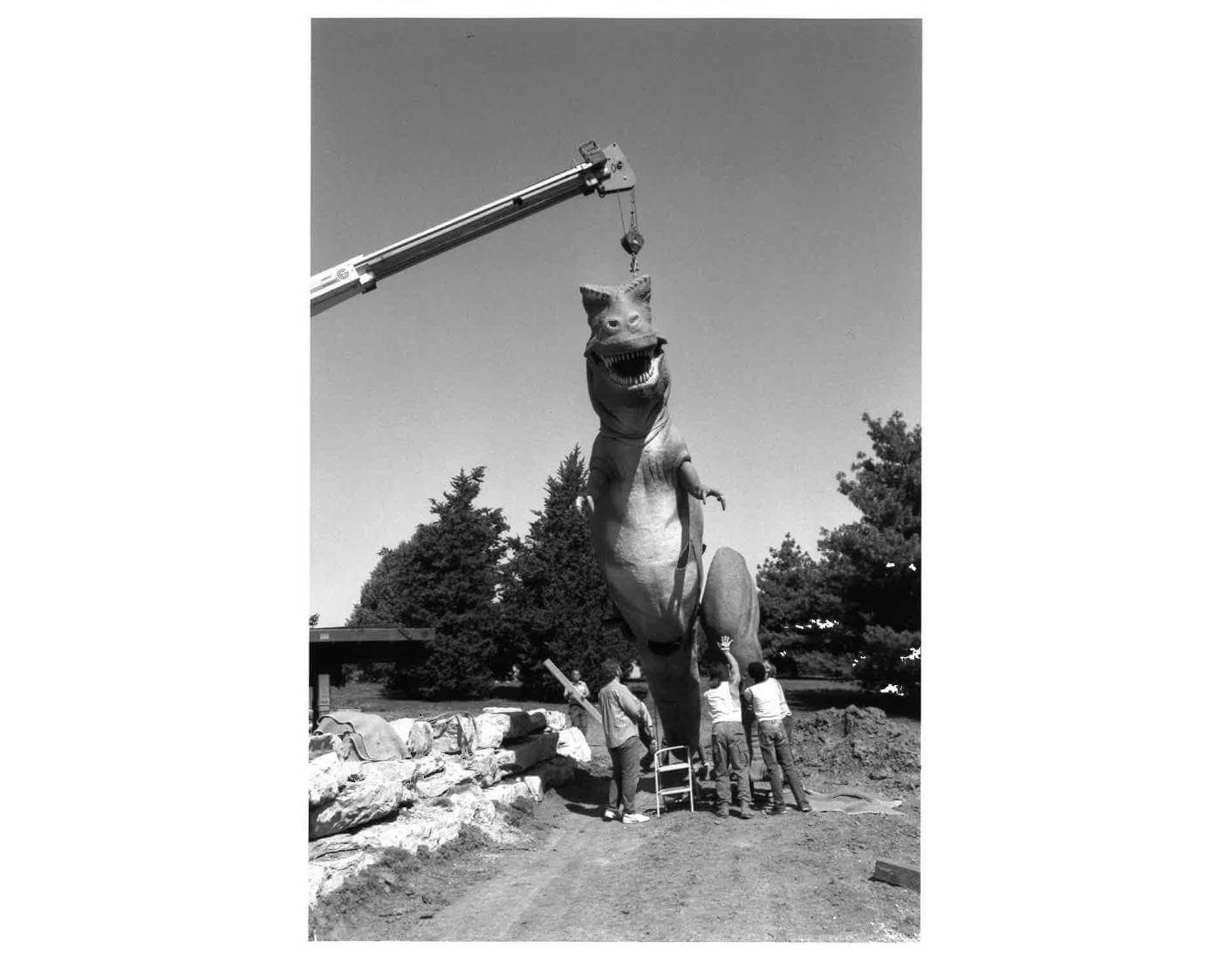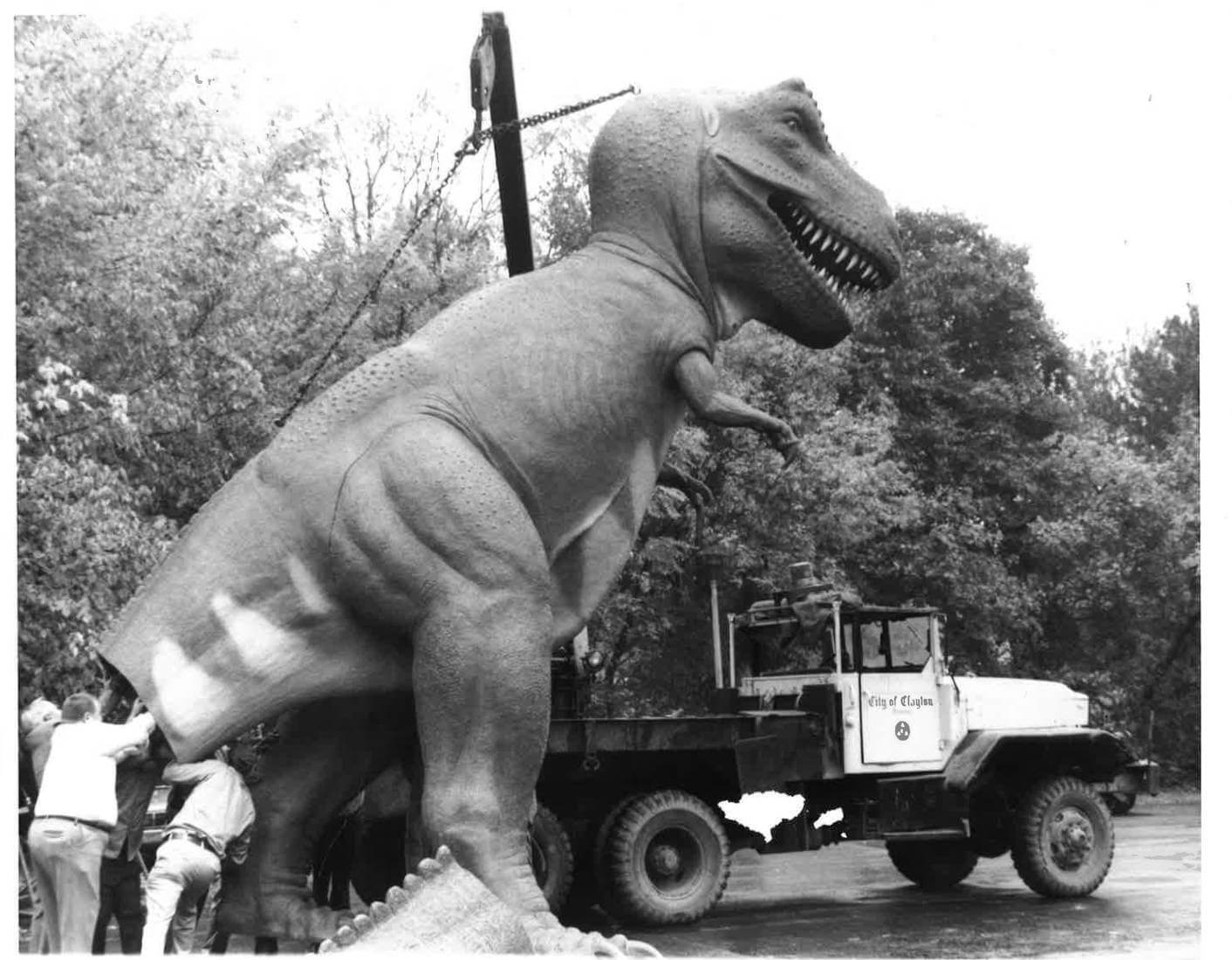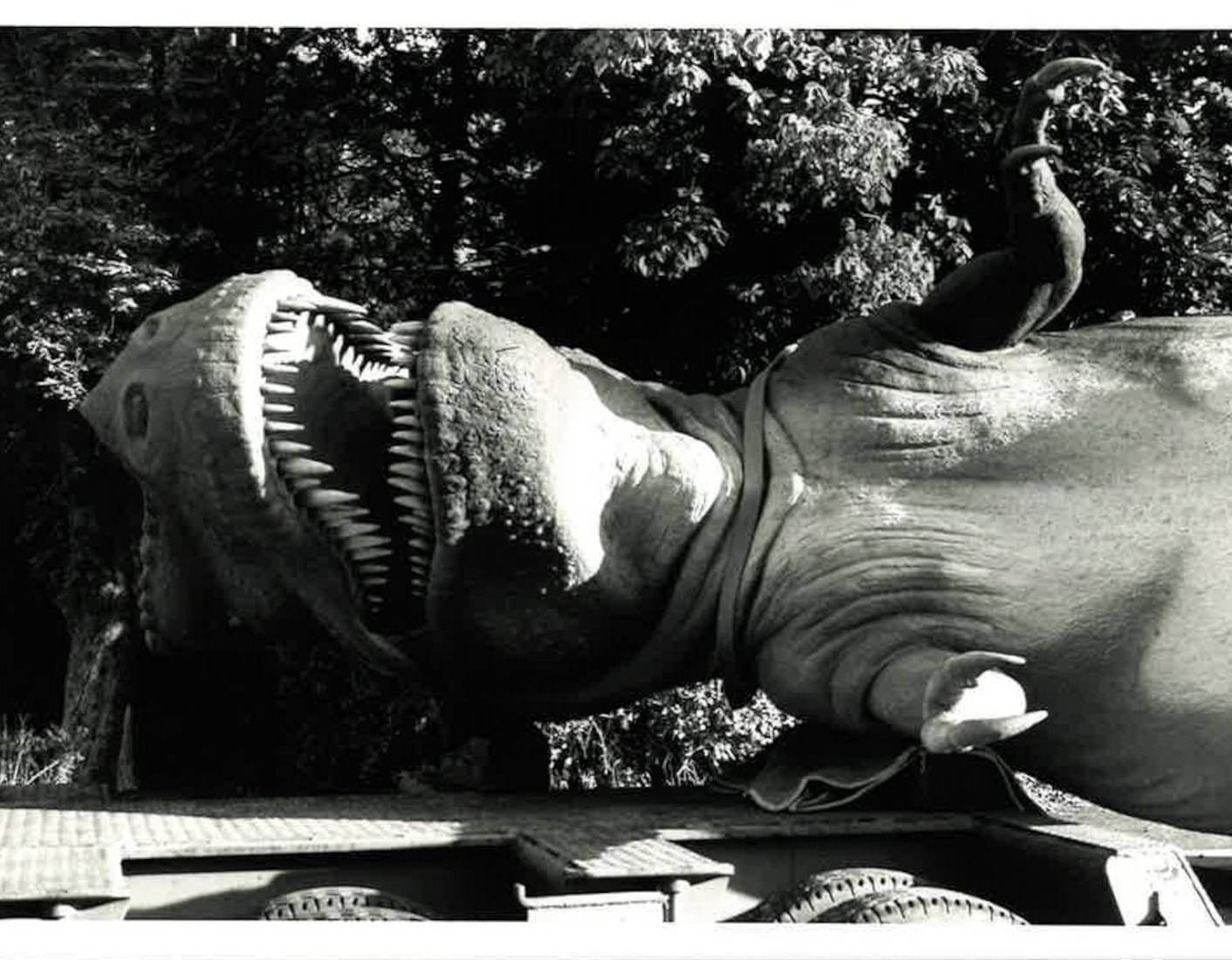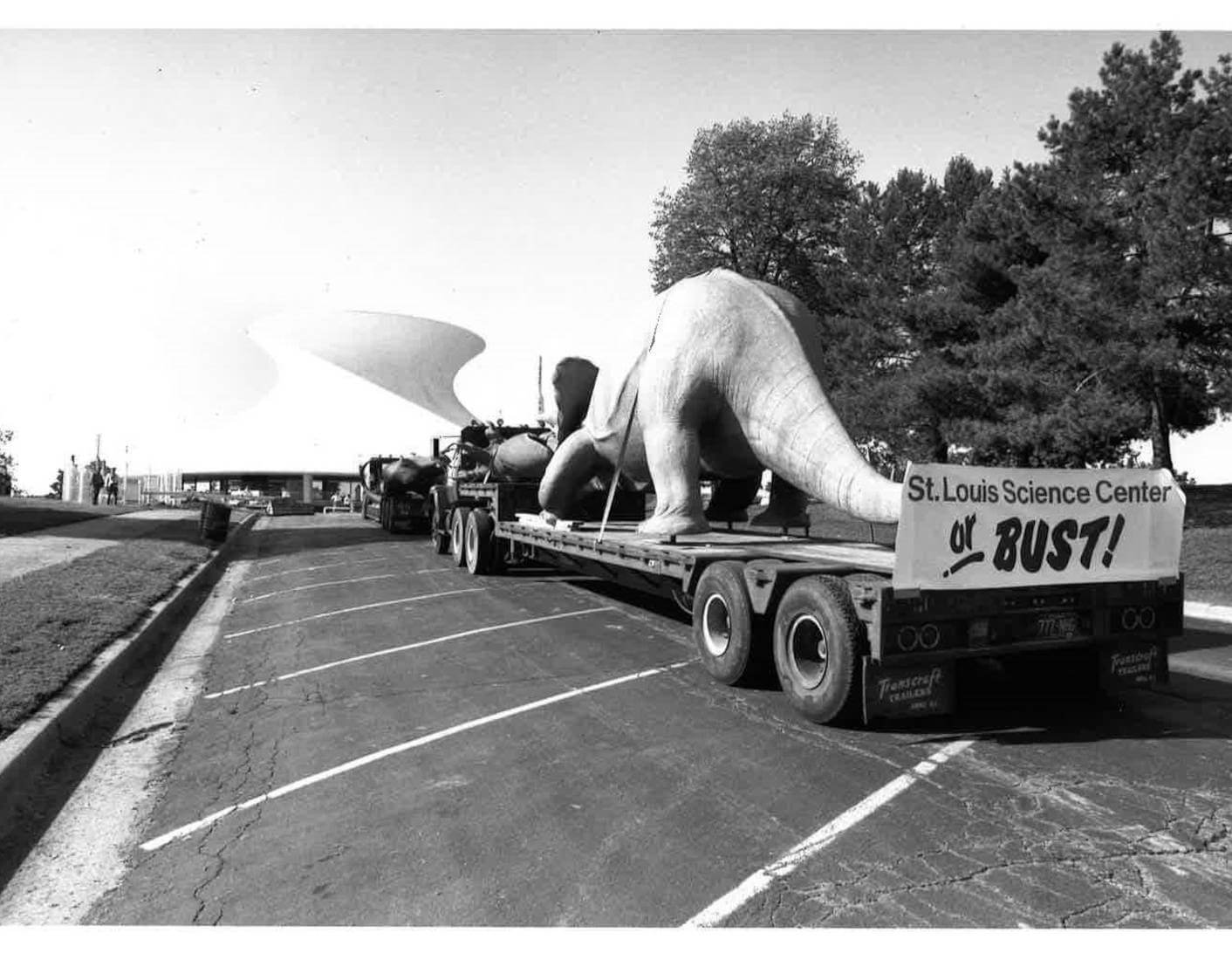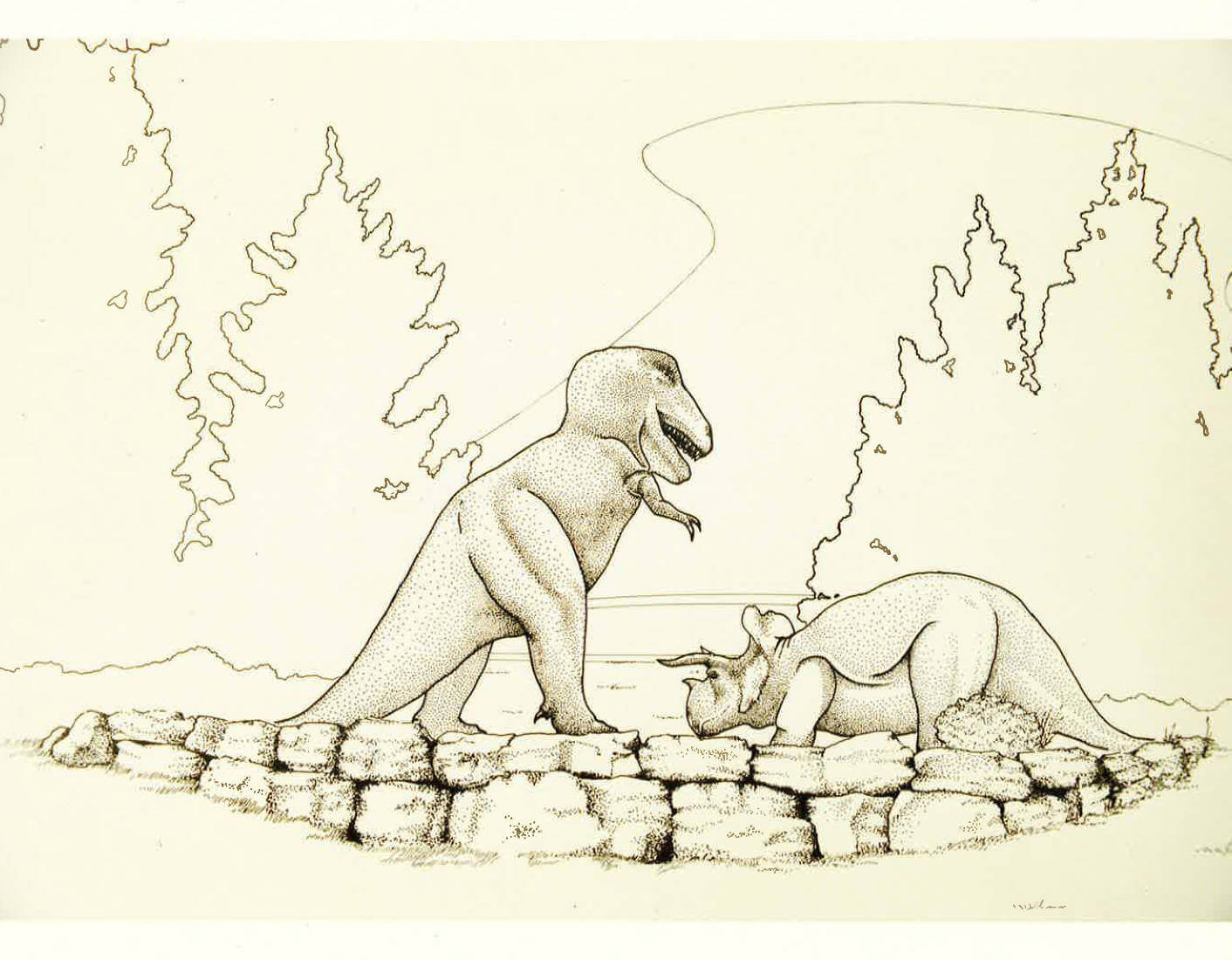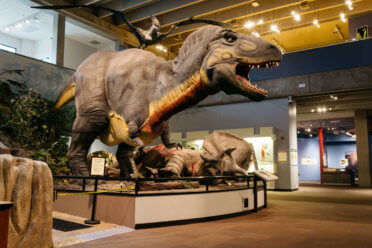
Science Today
Three Decades of Membership
– The Tyrannosaurus Rex
Our animatronic T.rex turns 30 this year (Happy Birthday!) and has been a member since we opened the Oakland Building in 1991. Let’s appreciate this large, loud and in charge dinosaur by taking a look at when it was discovered, how its posture was determined and why it may be anatomically incorrect (gasp!).
Interestingly, all the fossils mentioned below in this timeline, with the exception of the tyrannosauroids from China, were found in the Hell Creek Formation near Jordan, Montana. This is where our very own Fossil Prep Lab volunteers dig up fossils to be reconstructed at the Science Center.
The T.rex has many stories to tell. See our favorite T.rex making a home at the Science Center and see how his friends in Dinosaur Park made the long trek here as well.
-
1892Edward Cope incorrectly identifies a T.rex vertebra as “Giant Porous Vertebra.” 108 years later, a team from the Black Hills Institute found Cope’s dig site and confirmed that the fossil he found was from a T.rex.
-
1902-1915In 1902, Barnum Brown uncovers a partial T.rex skeleton in the Hell Creek Formation. This skeleton was later named “Tyrannosaurus rex” by Henry Fairfield Osborn, the president of the American Museum of Natural History. In 1915, this fossil holotype was incorrectly displayed upright, with its tail resting on the ground.
-
1960sPaleontologists theorize that T.rex did not stand upright, but in fact held an angle of 0–10 degrees, balancing on its legs like a seesaw. Despite this, the up- right posture continues to dominate most popular culture depictions of the T.rex.
-
2004Xing Xu et. al publishes a study showing that tyrannosauroids had protofeathers from “nose to tail.” Scientific illustrators began to depict almost all T.rex with feathers.
-
2017Phil R. Bell discovers and examines skin impressions from a T.rex, providing compelling evidence that the T.rex did not have feathers, and if it did, it was likely only on its dorsum (back).
So, is the T.rex model at the Science Center accurate?
The answer is…maybe! Paleontologists are hard at work to uncover more fossils and analyze them for clues that will lead them to further answers about the soft tissues of dinosaurs. In the meantime, swing by our old friend in the Ecology & Environment Gallery and get your selfie with him. He always enjoys the company, especially during lunch.






